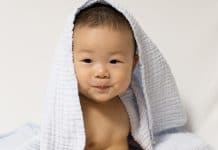The Chinese New Year is the most celebrated holiday of the year in China. It takes place on the first day of the first new moon after the winter solstice in the lunar calendar (February 3rd, 2011). Socially, it is a time for being with friends and relatives and the greater significance is of flushing out the old and welcoming in the new. This holiday, more than any other Chinese holiday, stresses the importance of family ties. The common themes are happiness, wealth, luck and longevity.
This year is the year of the rabbit. Years correspond to different animal signs, which repeat in 12-year cycles. In former times, the animal signs helped people keep track of their age and figure out who was older or younger.
In the days before the New Year, people begin “spring” cleaning. The old is swept away to clear room for the coming year’s good fortune. New Year’s Eve is a time for feasting with family and friends and many traditional foods are eaten such as dumplings boiled in water. After dinner, people await the fireworks at midnight to scare away evil spirits and bad luck. Lights are supposed to be kept on all night.
The next morning, or sometimes the evening before, children receive money in red envelopes as a present. On New Year’s Day, everyone wears new clothes, usually red, symbolizing a fresh start. It is believed that whatever happens on the first day of the new year will foretell what the year will be like, so children are not allowed to cry, parents are not allowed to scold their children or else they will do so all year.
For the next two weeks, people visit one another and exchange gifts. It is a great time for reconciliation. Old grudges are forgiven. The atmosphere is warm and friendly. The entire celebration culminates on the 15th day in the Lantern Festival, where people parade different lanterns in animal shapes or with poems written on them into the streets. One typical food is yuanxiao–sweet, stuffed rice balls.
This New Year’s holiday is not exclusive to China. It is celebrated in other Asian countries like Taiwan, Singapore, Korea, Vietnam, Malaysia, and Indonesia and by Asian communities in non-Asian countries like the U.S., England, France, Germany, Canada, Australia, etc.
For a more detailed account of the holiday, from which some of this description was heavily borrowed, please visit Frances Kai-Hwa Wang’s article at IMDiversity.com


































